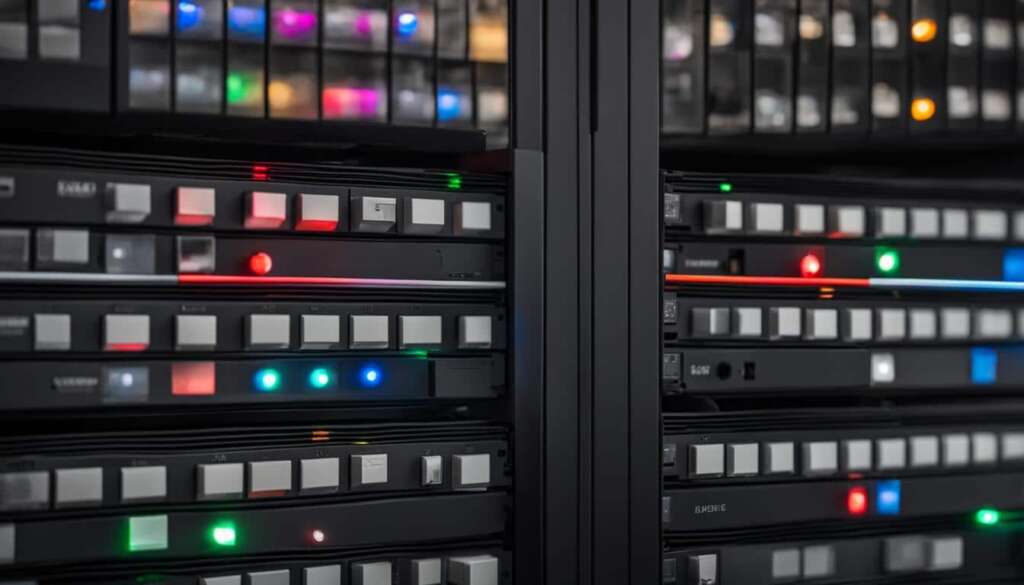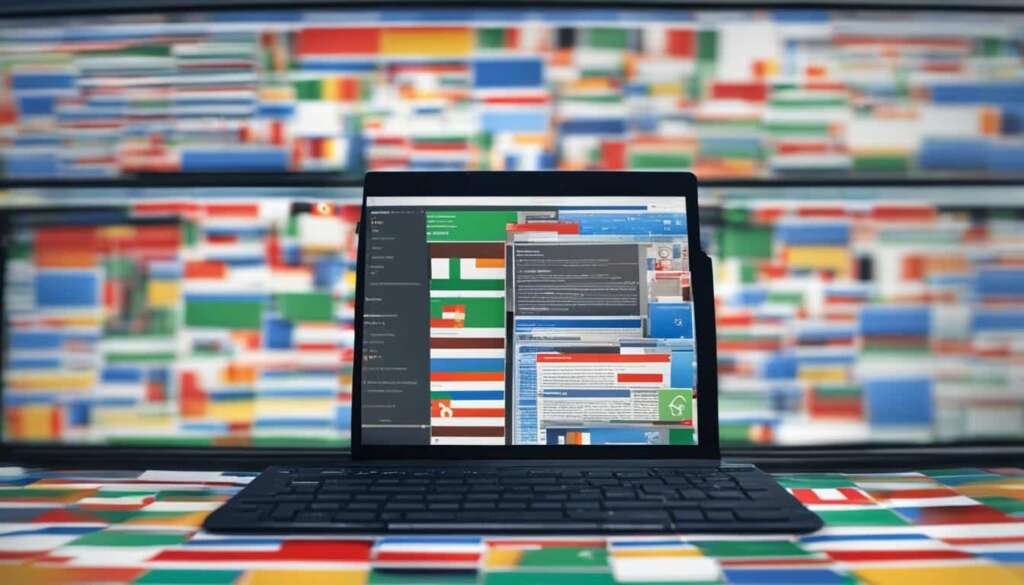Table of Contents
Looking to enhance your network security and streamline user authentication? Consider implementing a Radius server into your network infrastructure. With Radius, you can ensure secure access control, centralized authentication, and efficient network management.
A Radius server acts as a powerful authentication server, allowing you to verify and authorize user credentials for network access. Whether it’s a wireless access point, a VPN, or other network infrastructure, Radius ensures that only authorized users can connect, eliminating the risk of unauthorized access and enhancing network security.
Moreover, by integrating Radius with directory services solutions like Microsoft Active Directory or OpenLDAP, you can centralize user authentication and simplify your network management. This means you can manage user credentials and permissions in one place, reducing administrative overhead and improving operational efficiency.
With Radius, you can take control of your network’s security and create a robust and reliable AAA (authentication, authorization, and accounting) server. Don’t leave your network vulnerable to unauthorized access and potential breaches – empower your network with Radius server security today.
What Is RADIUS Protocol?
RADIUS, or Remote Authentication Dial-In User Service, is a widely used networking protocol that enables centralized authentication, authorization, and accounting (AAA) for users accessing remote networks. It provides a secure and efficient way to manage access control and user authentication, allowing network administrators to control user access to resources based on policies and permissions.
RADIUS uses a client-server model, with the RADIUS client typically being a network access server (NAS) and the RADIUS server being a daemon process running on a UNIX or Windows NT machine. The RADIUS server receives user connection requests, authenticates the user, and returns the necessary configuration information for the client to deliver service to the user. RADIUS authentication and authorization are coupled together, allowing the server to verify the user’s identity and provide access based on the user’s privileges.
RADIUS also supports accounting functions, which allow for the tracking of resource usage during user sessions.
| Advantages of RADIUS Protocol | Explanation |
|---|---|
| Centralized Authentication | RADIUS enables centralized authentication, streamlining the management of user credentials and improving network security. |
| Granular Access Control | With RADIUS, network administrators have granular control over user access, allowing them to define policies and permissions based on specific user or user group. |
| Secure User Authentication | RADIUS eliminates the need for shared passphrases and ensures that each user has their unique set of credentials, enhancing network security. |
By utilizing the RADIUS protocol, network administrators can have greater control over network access, leading to increased security and improved management of user authentication. The centralized authentication and authorization provided by RADIUS contribute to a more secure network environment, reducing the risk of unauthorized access and potential security breaches.
How Does RADIUS Work?
RADIUS operates based on the client-server model, with the client acting as the network access server (NAS) and the server functioning as the RADIUS server. When a user initiates a connection to a network, the NAS prompts for the user’s credentials and sends an Access-Request query to the RADIUS server. The RADIUS server then verifies the user’s identity by checking the provided username and password against a database or directory.
If the credentials are correct, the RADIUS server responds with an Access-Accept message to the NAS, along with any additional parameters or restrictions for the user’s session. However, if the credentials are incorrect, the RADIUS server sends an Access-Reject message. The NAS, upon receiving the response from the RADIUS server, grants or denies access to the user based on the server’s decision.
The RADIUS protocol utilizes User Datagram Protocol (UDP) for communication between the client and server. The authentication and authorization processes are handled through a shared secret and encrypted passwords, ensuring a secure exchange of information.
The client-server architecture of RADIUS provides a robust mechanism for authentication and authorization, enabling secure network access control.

The image above illustrates the interaction between the RADIUS server and the NAS in the client-server model of RADIUS.
History of RADIUS Protocol
The RADIUS protocol, developed by Livingston Enterprises, Inc. in the early 1990s, revolutionized access server authentication and accounting. It emerged from the need for a non-proprietary dial-in server solution for the National Science Foundation’s NSFNET project. Merit Networks, entrusted with implementing the project, sought a robust solution to authenticate remote users and establish network connections.
Livingston Enterprises proposed the first RADIUS-like server that enabled remote authentication, securing the contract from Merit Networks. This groundbreaking development led to the widespread adoption of RADIUS as the industry standard for authentication.
The RADIUS protocol utilizes a client/server architecture, with the client representing the network access server (NAS) and the server acting as the RADIUS server. This framework allows for seamless authentication and authorization for users connecting to a network. RADIUS also enables accurate accounting of resource usage, providing essential insights for network management and optimization.
Table: Key Milestones in the Development of RADIUS Protocol
| Date | Event |
|---|---|
| Early 1990s | Livingston Enterprises develops RADIUS protocol for access server authentication and accounting |
| N/A | RADIUS-like server proposed to Merit Networks for remote authentication |
| 1997 | RADIUS protocol ratified as the authentication standard |
The historical significance of the RADIUS protocol lies in its ability to authenticate and authorize users, ensuring secure access to networks. By incorporating RADIUS into network infrastructures, organizations can enhance authentication processes and bolster network security.
Benefits of RADIUS Protocol
The RADIUS protocol offers a multitude of benefits that enhance network security and enable efficient access control. By implementing RADIUS, organizations can achieve centralized authentication, ensuring that user credentials are managed in a single directory such as Microsoft Active Directory or OpenLDAP. This eliminates the need for shared passphrases, significantly improving network security. Each user is assigned unique credentials, enhancing the accountability and integrity of user authentication processes.
RADIUS also enables granular access control, empowering network administrators to precisely specify the privileges and permissions granted to individual users or user groups. This level of control ensures that each user has appropriate access to network resources, mitigating the risk of unauthorized access or data breaches.
Furthermore, RADIUS supports VLAN tagging, which enables the segmentation of a network into virtual networks. This feature provides an additional layer of security, as even if one user or VLAN is compromised, the overall network infrastructure remains protected. By implementing VLAN tagging, organizations can minimize the potential impact of security breaches while maintaining a secure network environment.
Overall, the RADIUS protocol significantly enhances network security by offering centralized authentication, granular access control, and VLAN tagging capabilities. These features contribute to a stronger, more secure network infrastructure, ensuring that user access is authenticated, authorized, and protected.

| RADIUS Protocol Benefits | Description |
|---|---|
| Centralized Authentication | Manage user credentials in a single directory, eliminating shared passphrases and improving network security. |
| Granular Access Control | Specifying precise privileges and permissions for individual users or user groups, reducing the risk of unauthorized access or data breaches. |
| VLAN Tagging | Segment the network into virtual networks, providing an extra layer of security and minimizing the potential impact of security breaches. |
Conclusion
Deploying a RADIUS server is essential for organizations looking to fortify their network security and streamline user authentication. Organizations can enhance network security and protect their network infrastructure from unauthorized access by integrating RADIUS with directory services solutions and implementing per-user VLAN tagging. RADIUS provides a centralized authentication mechanism that eliminates the use of shared passphrases, ensuring that each user has their unique set of credentials. This improves network access management and reduces the risk of unauthorized access.
With modern solutions like Cloud RADIUS, organizations can simplify the implementation of a RADIUS server and enjoy the benefits of a secure network without the hassle of managing all the components themselves. Cloud RADIUS offers a user-friendly interface that enables organizations to easily set up, configure, and manage their RADIUS server. By leveraging Cloud RADIUS, organizations can have peace of mind knowing that their network security is taken care of, allowing them to focus on other critical aspects of their business.
In conclusion, deploying a RADIUS server with centralized authentication is a crucial step towards achieving robust network security and efficient user authentication. By implementing technologies like RADIUS and Cloud RADIUS, organizations can safeguard their network infrastructure, mitigate the risk of unauthorized access, and ensure secure communication across their network environment.
FAQ
What is a RADIUS server?
A RADIUS server is an authentication server widely used for network access control and network security. It provides centralized authentication, authorization, and accounting for users accessing remote networks.
How does RADIUS enhance network security?
RADIUS enhances network security by requiring users to provide their unique credentials to access the network, eliminating the need for shared passphrases. It also supports VLAN tagging, which segments the network into virtual networks, adding an extra layer of security.
What is the client-server model in RADIUS?
RADIUS uses a client-server model, with the client being the network access server (NAS) and the server being the RADIUS server. When a user tries to access the network, the NAS sends an Access-Request query to the RADIUS server for authentication and authorization.
What is the history of the RADIUS protocol?
The RADIUS protocol was developed by Livingston Enterprises in the early 1990s as a non-proprietary authentication and accounting protocol. It gained popularity when Merit Networks adopted it for the NSFNET project, and it became a standard for authentication in 1997.
What are the benefits of using the RADIUS protocol?
The RADIUS protocol offers centralized authentication, allowing organizations to manage user credentials in a single directory. It also enables granular access control and supports VLAN tagging, enhancing network security and providing a secure and reliable authentication mechanism.
Why should organizations deploy a RADIUS server?
Organizations should deploy a RADIUS server to fortify network security and streamline user authentication. Integrating RADIUS with directory services and implementing per-user VLAN tagging enhances network security and protects network infrastructure from unauthorized access.













